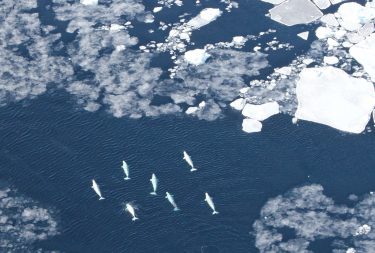
In recent decades, parts of the Arctic seas have become increasingly ice-free in late summer and early fall. As sea ice is expected to continue to recede due to climate change, seasonal ship traffic from tourism and freight is projected to rise. A study from the University of Washington and the University of Alaska Fairbanks is the first to consider potential impacts on the marine mammals that use this region in autumn and identify which species will be most vulnerable. The study is published the week of July 2 in the Proceedings of the National Academy of Sciences.
“We know from more temperate regions that vessels and whales don’t always mix well, and yet vessels are poised to expand into this sensitive region,” said lead author Donna Hauser, a research assistant professor at the University of Alaska Fairbanks who completed the work as a postdoctoral researcher at the UW. “Even going right over the North Pole may be passable within a matter of decades. It raises questions of how to allow economic development while also protecting Arctic marine species.”
The study looked at 80 subpopulations of the seven marine mammals that live in the Arctic and identified their risks on or near major shipping routes in September, a month when the Arctic Ocean has the most open water. The most vulnerable marine mammals were found to be narwhals, or tusked whales. These animals migrate through parts of the Northwest Passage to and from their summertime habitats.
Read more at UW Today »
